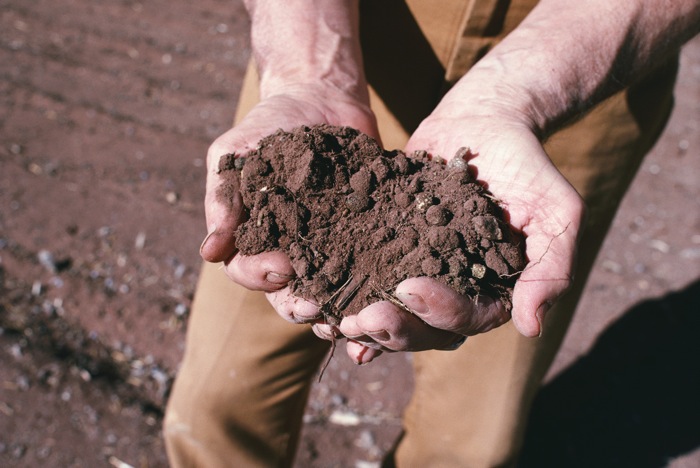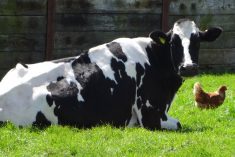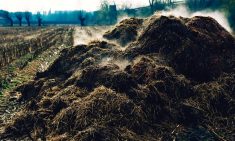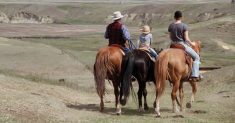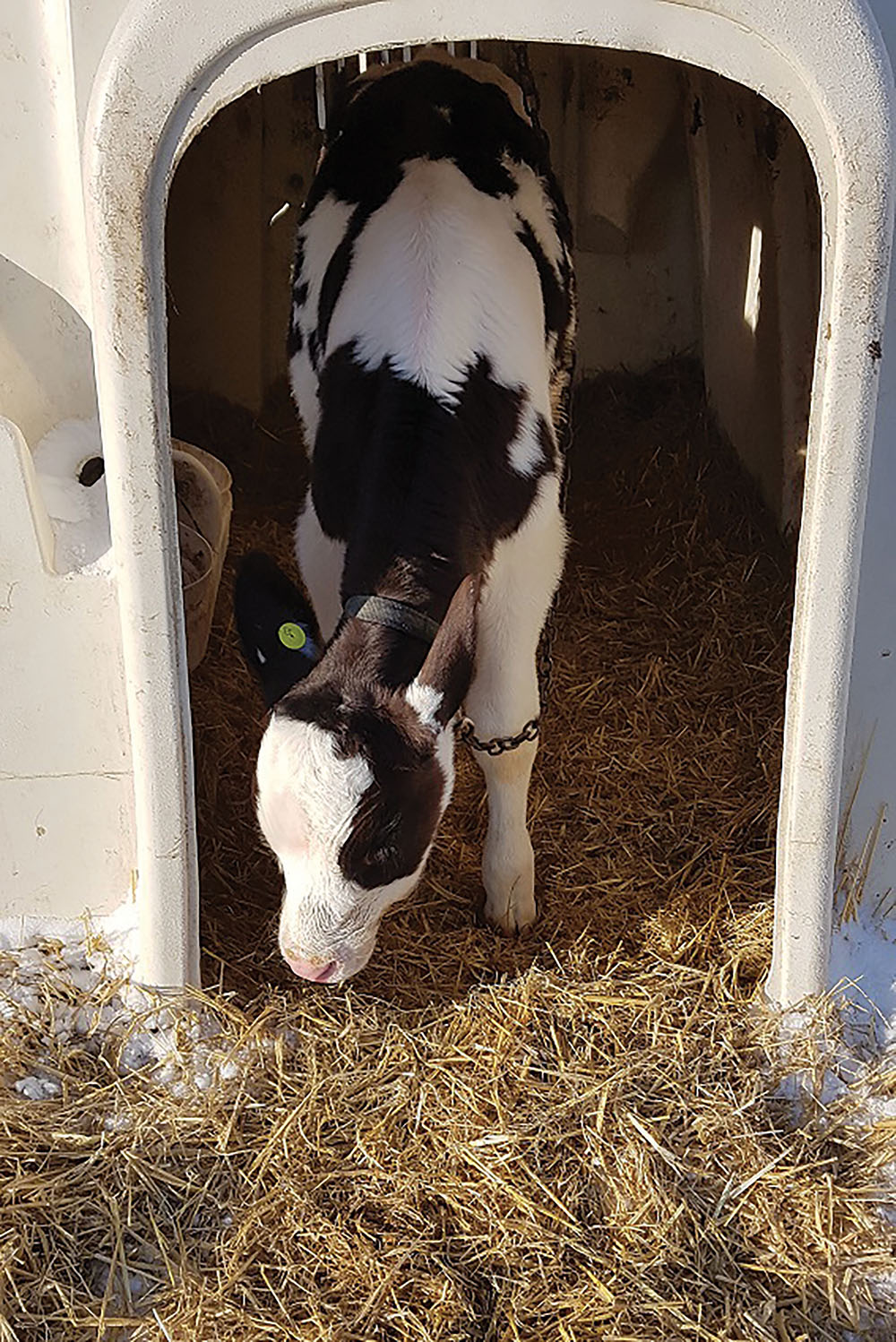Last fall we were able to disc 10 acres of our old hayfield that has been increasingly infested with water hemlock. Considering this has been a work in progress for about 10 years it felt magnificent to actually, finally, have the equipment, time, and weather all at once.
After researching chemical control of water hemlock, cultivation seemed the better option. The regrowth expectations after chemical application were high, and the requirements for summerfallowing and potentially respraying several times were also very high. Spending thousands of dollars on chemicals and then not being able to use the land anyway for several seasons due to weed regrowth, clinched the decision to experiment with these 10 acres using more organic methods. The basic premise is that if we improve the soil the water hemlock will not grow. But there are other benefits of increasing soil health.
Read Also

Beef demand drives cattle and beef markets higher
Prices for beef cattle continue to be strong across the beef value chain, although feedlot profitability could be challenging by the end of 2025, analyst Jerry Klassen says.
Studying “When Weeds Talk” by McCaman, J. L. revealed that not only is this land suffering from having had too much moisture, the weeds that are growing there indicate a low soil calcium issue. It is fascinating that nature can show us just through plants what is happening in the soil — largely as a consequence of farming practices over the years.
Dr. Arden Andersen, of Kansas, a respected teacher, consultant, physician and farmer has studied the correlation between soil health and feed nutrition. His research has shown that the nutrient content of foods today ranges from 15 to 75 per cent less compared to half a century ago. According to him we have to look at the soil to decipher why the nutrition isn’t at the proper levels. For a livestock producer this means if we want our input costs to go down we need to be raising our feed and livestock on rich soil that is teaming with life.
Measuring quality
Feed testing can be a daunting task so we are very interested in using Brix. The Brix reading isn’t just about sugar content in a plant, it actually refers to the total amount of soluble solids, that is, sugars along with plant proteins, vitamins, and minerals. A Brix reading lower than 10 tells the farmer that the plant lacks nutrients. The desirable reading is 13, which indicates a robust and nutrient-rich plant.
To measure the Brix a refractometer is necessary as well as a method of extracting the juice from the plant. An optical refractometer uses daylight passed through a glass prism to measure Brix. The reading is read through an eyepiece, and the user measures the refracted light angle on an optical scale. To obtain juice/sap samples some people use garlic presses, but a juicer is better. We have used an optical refractometer, that costs about $100, available online at amazon.ca. There are digital models available as well. A great visual explanation of these machines is found at crossroads.ws/brixbook/BBook.htm.
Watch the animals
Watching the performance of young livestock is the greatest measure of how well the ration is supplying the needs of mature ruminants. Young stock depend on their dams’ milk for growth. Ruminant animals are relativity inefficient at converting grass proteins to milk proteins, only achieving approximately 20 to 25 per cent conversion efficiency. On top of this, some proteins are not well utilized by the animal. Either improving this conversion efficiency or increasing the total grass can increase the total milk output of a cow.
Research proves there is some correlation between this conversion efficiency and high sugar (Brix) content on a farm. IGER Innovations produced research in 2001 suggesting high-sugar grasses have a positive effect on the efficiency of milk production in an animal.
Grass is broken down in the rumen, producing amino acids to grow and produce more protein, which is later used for milk production by the cow. When the diet lacks readily available energy such as sugars, rumen microbes either cannot grow or instead use amino acids to provide energy, meaning less milk production. Feeding energy-rich foods in a concentrate feed is one way to increase the efficiency of the rumen, however the cheaper way is to use the sugars which naturally occur in forages, (Moorby, 2001). This concept is extremely important to grass-based livestock operations that do not depend on adding carbohydrates such as barley to ruminant diets to make up for what our grass is lacking.
Feeding the soil
How do we improve our soil to improve our Brix reading? One idea is utilizing a mycorrhizal inoculant at seeding. Mycorrhizal refers to a class of natural beneficial micro-organisms that live in the soil where grasses grow and enhance the plants ability to utilize the macronutrients that are in the soil. Mycorrhizal fungi are present in most undisturbed soils, such as in forests. They live symbiotically with innumerable amounts of beneficial bacteria, protozoa, actinomycetes, worms, insects, and other organisms. Unfortunately, populations are particularly low in agricultural soils that have been exposed to pesticides, chemical fertilizers, tillage, compaction, organic matter loss, erosion, and other practices that won’t feed them. It is very hard to naturally replace the mycorrhizal fungi because they form their spores under ground and are not easily moved in the air.
Use of mycorrhizal inoculation at seeding can also reduce the need for applying phosphorus because mycorrhizal fungi such as Glomus mosseae, Glomus intraradices and Glomus etunicatum species produce a high level of phosphotase enzymes that specifically extract tightly bound phosphorus from clay particles and make P immediately available to the plant. Since high rates of P application can kill mycorrhizal this needs to be considered when using it.
In my reading I tripped across this quote that reinforced our thinking that we were on the right track: “Can you believe that you can take pretty much identical-looking hay from neighbouring fields, feed 50 pounds a day from one field to a cow and have her drop in milk production and get sick, and feed half as much from the other field and have the cow rise in production and be healthy? What is the difference between the two samples of hay? QUALITY! — Dr. Harold Willis, “How To Grow Great Alfalfa.”Our hay field has needed attention for many years and we’re hopeful the repayment will be seen in many ways.

